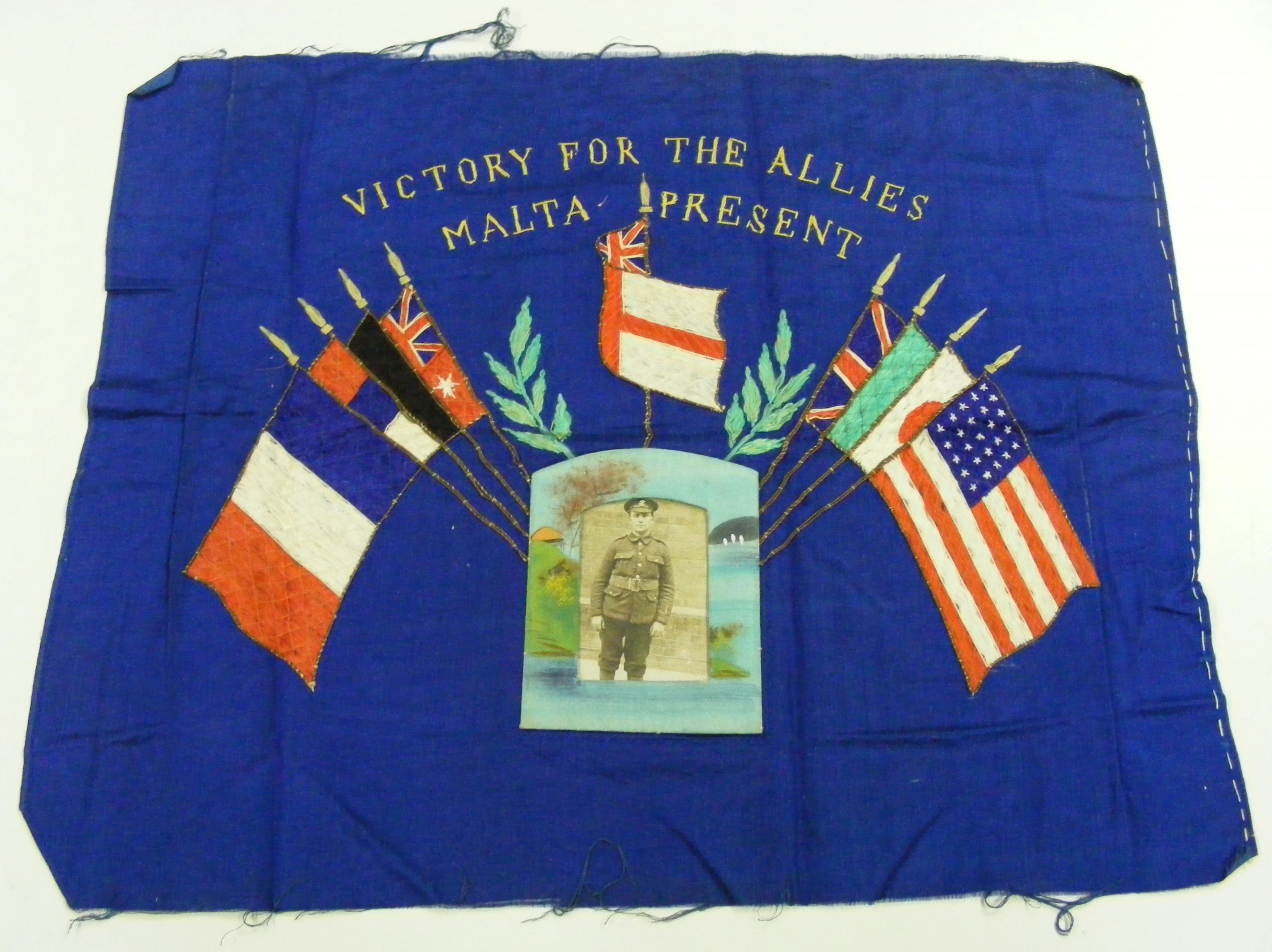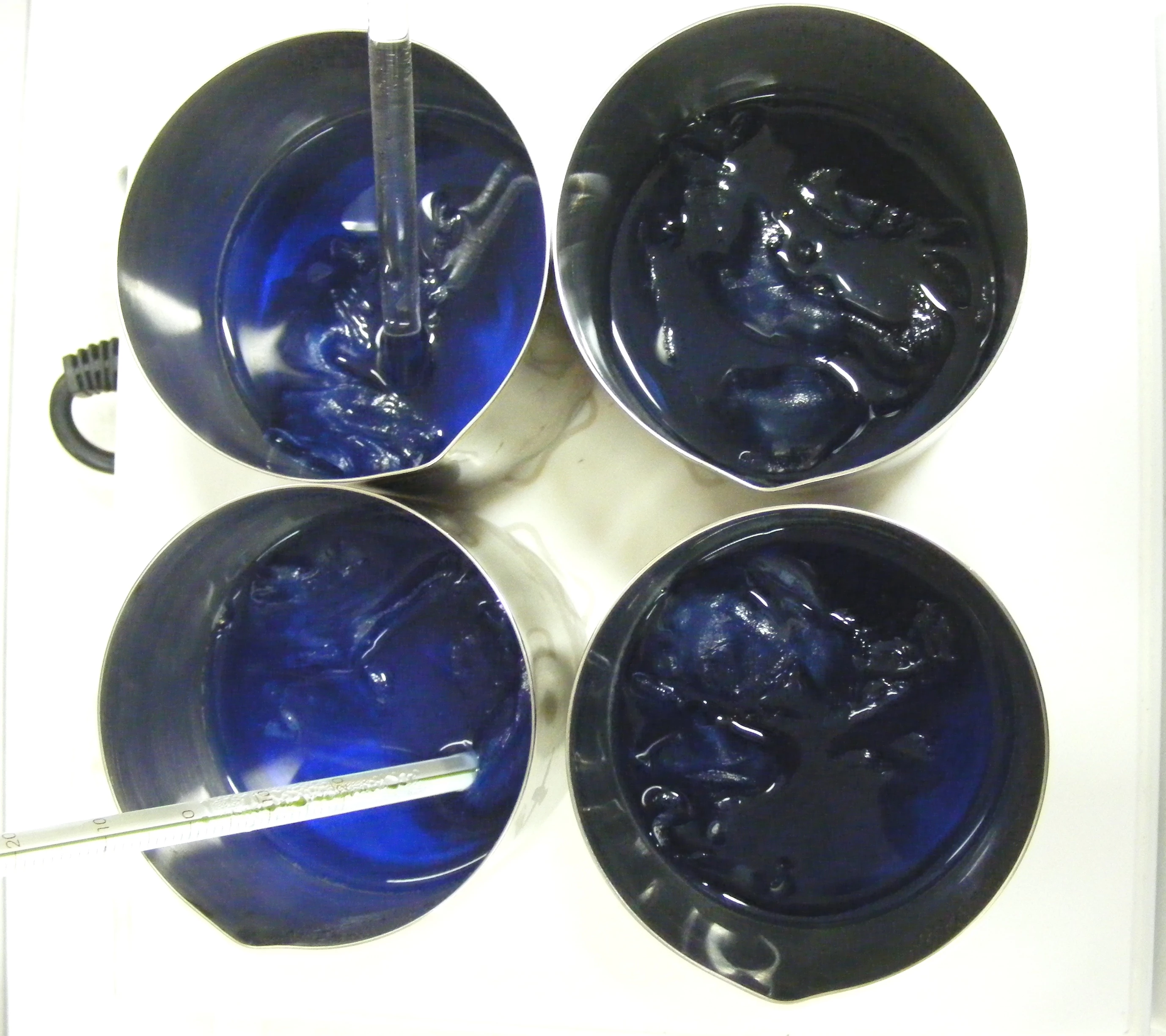The unknown soldier
, 27 Chwefror 2014
As part of Amgueddfa Cymru’s First World War centenary programme the collections relating to this period will be conserved, digitised and made available online. My role at the museum is Textile Conservator so I am responsible for the practical care of the textile collections across all seven sites. There are many WW1 objects in the textile collection; most take the form of commemorative or souvenir pieces, while others are costumes and accessories.
One of the objects recently conserved for the project is an embroidered panel measuring 43.5cm × 53.5cm (maker unknown). It is made from a single piece of royal blue silk satin embroidered with flags and text which reads ‘VICTORY FOR THE ALLIES MALTA PRESENT’ in yellow silk thread using stem stitch. It also features a photograph of a Welsh soldier printed onto a postcard which is slipped inside a frame made from card and covered in painted silk. The frame is tacked to the satin along the bottom and sides with the top edge left open. The flags are made with lines of silk floss which have been laid down to form the coloured sections and secured in a criss-cross, net-like fashion and couched using a very fine thread. Thicker, cotton threads are used to define the sections of colour. The flags and poles are made from a coiled paper thread with a cotton core.
When it came to the conservation studio the panel was in a fair condition with some light surface soiling all over and creasing across the silk from being folded around the frame at some point, probably before it came to the museum. It is possible that the panel once had an adhesive backing as the embroidery threads on the reverse appear stiff and flattened. There is also some abrasion to the surface of the embroidery threads and satin floating yarns. The top and bottom edges are frayed and there are several splits in the ground fabric where it has been stitched through.
The conservation treatment began with a surface clean using a micro vacuum to pick up dust and fluff. It was then humidified to remove the creases; we cannot iron historic textiles because the heat and pressure of conventional irons can cause further damage. Instead we use gentle techniques with cold water vapour or, in this case, a combination of materials layered up to introduce moisture gradually to the textile, giving it time to penetrate the fibres. Once the fibres were relaxed, glass weights were used to hold them in position whilst drying. The photograph was removed during the humidification process to avoid any damage. The next stage was to support the splits in the satin which affect the stability of the textile. Fine silk crepeline was chosen to do this because it gives a light support but is almost transparent, so even though it covers the reverse you can still see the threads; it was dyed blue to match the colour of the satin. The crepeline was fixed to the textile using a very fine layer of thermoplastic adhesive, which was applied to the dyed crepeline and allowed to dry. The adhesive was then re-activated to bond it to the reverse of the panel using a heated spatula; the bond created is enough to support the textile but not so strong that it cannot be removed in the future if required. The frayed edges were then laid out and secured though to the backing by working a blanket stitch along the edge using a fine polyester thread.
The textile is now back in store but will soon be available to view online and may one day go on display at St Fagans. Keep checking the blog for more updates as the project progresses!
The soldier in the photograph is yet to be identified; if you recognise him please contact the museum via Elen Philips, Principal Curator: Contemporary & Community History. Tel: 029 2057 3432 – or on Twitter: @StFagansTextile





sylw - (2)